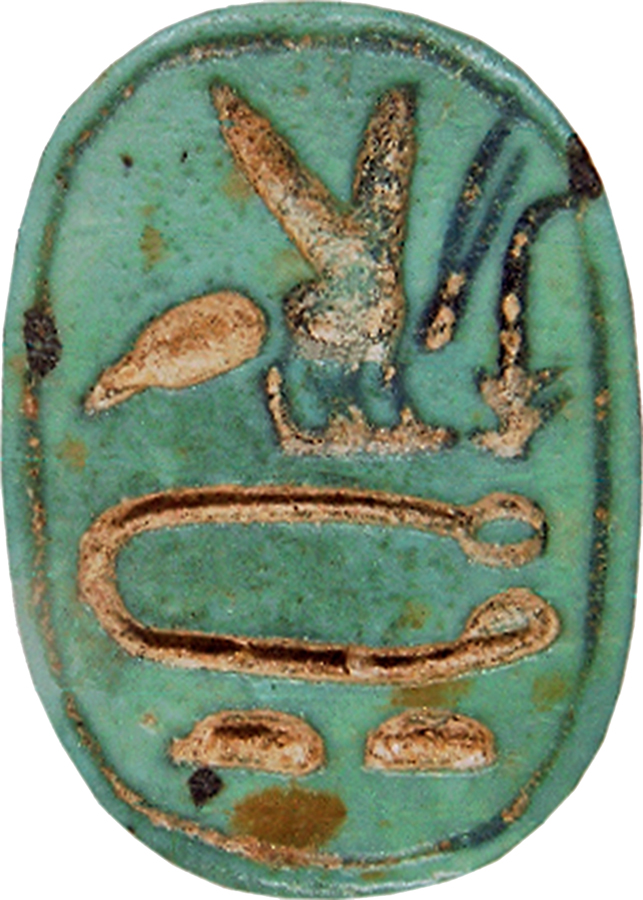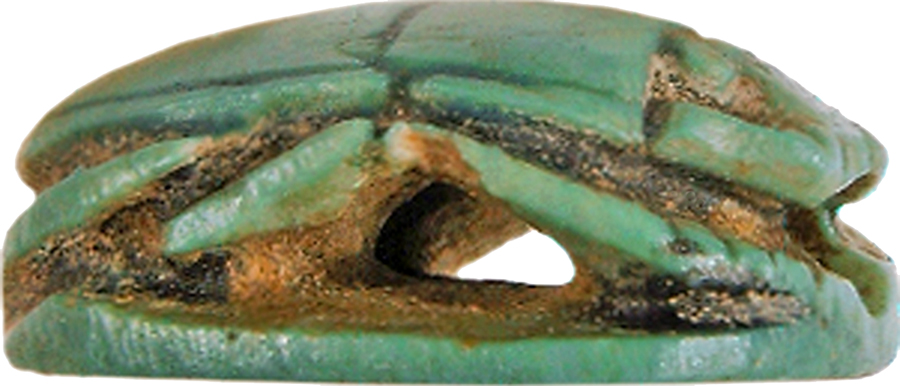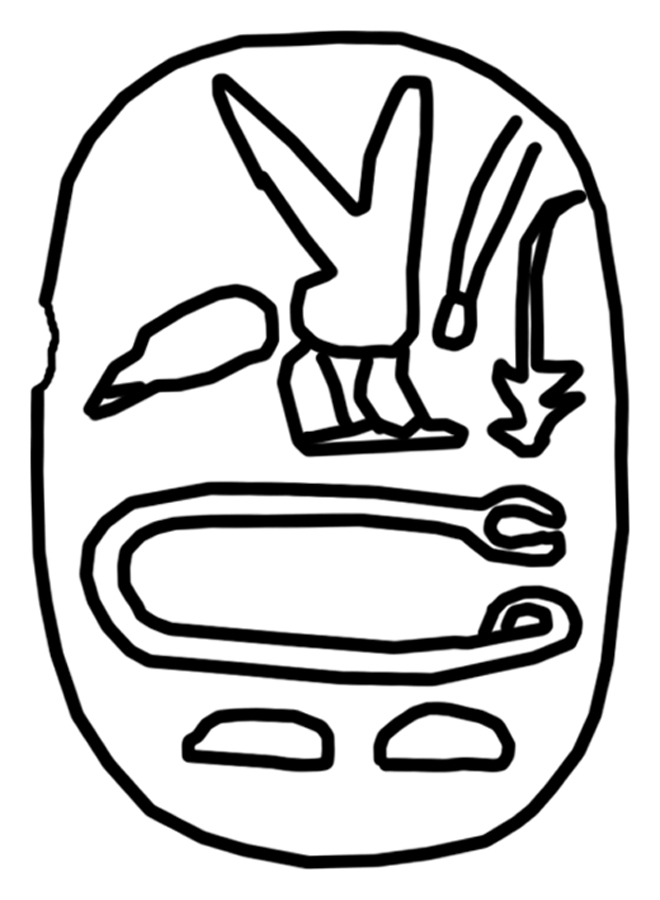Scarab with Royal Title and Name of Tjetet (?)
(Ancient Egypt and Nubia )
This steatite scarab is glazed and inscribed on the bottom with the "two royal aspects" title and "Tjetet," possibly a royal name. The top has a medium high back and deeply incised details with almost regular line flow and good workmanship. The piece is simply made.
The "two royal aspects" title does not contain a known royal name. Either one can interpret the "Tjetet" as a miswriting, or as an offering table which can lead to a reading of "Belonging to the offering table of the King of Upper and Lower Egypt." This interpretation is most likely, yet one should not neglect the possibility that "Tjetet" is the name of an unknown king.
This scarab functioned as an amulet with kingship connotations, and was originally mounted or threaded. It is possible that the amulet should assure the participation in the royal rituals, especially in the food supply, and should also guarantee the supply for its private owner.
The undercutting of the legs, the clear partition of the plates by deep incised lines, and the single partition lines on the back are known for scarabs of the Third Intermediate Period.
Inscription
Provenance
Provenance (from the French provenir, 'to come from/forth') is the chronology of the ownership, custody, or location of a historical object. Learn more about provenance at the Walters.
Henry Walters, Baltimore, 1929 [mode of acquisition unknown]; Walters Art Museum, 1931, by bequest.
Geographies
Egypt (Place of Origin)
Measurements
H: 1/4 x W: 3/8 x L: 9/16 in. (0.6 x 1 x 1.4 cm)
Credit Line
Acquired by Henry Walters, 1929
Location in Museum
Not on view
Accession Number
In libraries, galleries, museums, and archives, an accession number is a unique identifier assigned to each object in the collection.
In libraries, galleries, museums, and archives, an accession number is a unique identifier assigned to each object in the collection.
42.59












